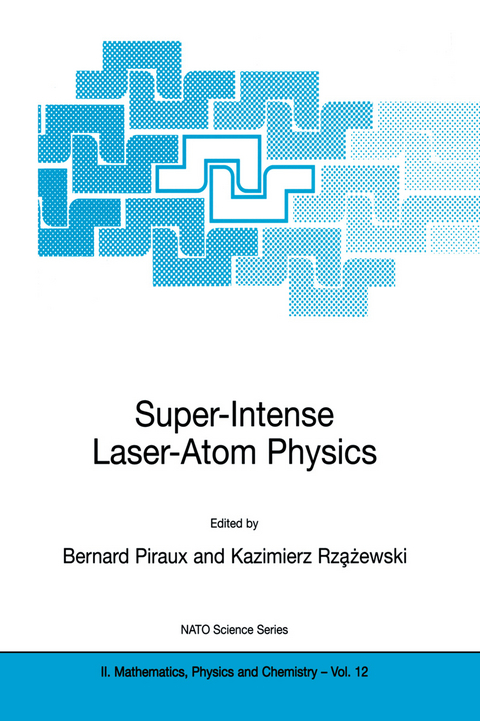
Super-Intense Laser-Atom Physics
Springer (Verlag)
978-0-7923-6863-2 (ISBN)
Energy distribution of two-electron ionization of helium in an intense laser field.- Double ionization in strong fields: ion momenta and correlated electron momenta.- Mechanism of the nonsequential double ionization of helium.- Electron momentum distributions for double ionization in the strong field limit.- S-matrix theory of ‘recoil-ion’ momentum distribution for double ionization in femtosecond laser fields.- Nonsequential double ionization: a minimal correlation approach.- Non-sequential double ionization of atoms in strong fields.- Double-electron ionization of two-electron system in a strong laser field.- Calculation of double ionization of helium.- The two-electron response in laser driven helium.- The helium atom in strong and short laser pulses: Multielectron effects.- Dynamics of a two-electron system driven by an ultrashort and intense laser pulse.- Angular distributions for double ionization by an ultrashort, intense laser pulse: the case of Li-.- Two-and three electron atoms in strong laser fields.- Tunnelling ionization and the Franck-Condon principle.- Dissociative ionization of few-electron molecules in intense laser fields.- One-photon breakup of H2+ in a strong DC field.- Nuclear fusion in gases of deuterium clusters and hot electron generation in droplet sprays under irradiation with an intense femtosecond laser.- The absorption of energy by large atomic clusters from superintense laser pulses.- A semi-classical model for high-harmonic generation.- Beyond the simple man’s model for high harmonic generation.- Anisotropy-induced polarization effects in harmonic generation by an absorptive medium.- About new method of high harmonic amplification.- X-ray generation via stimulated recombination of electrons and Bohr’s correspondence principle.-Interference stabilization: ?- and V-schemes, dynamics of ionization initial coherent population of Rydberg levels and quantum phase control of the ionization yield.- Computer experiments on atomic stabilization in a strong laser field.- Quasistationary stabilization of the decay of a weakly-bound level and its breakdown in a strong laser field.- The strong field limit of atomic stabilization in ultrashort pulses.- 3-D numerical calculations of laser atom interactions — Subrelativistic and weakly relavistic regime.- Momentum space description of hydrogen atom interacting with a low frequency, strong laser field.- Relativistic effects in the atomic response to super-intense laser pulses.- Weakly relativistic stabilization — The effect of the magnetic field.- Intense laser-atom interactions: beyond the dipole approximation.- A picturebook of relativistically driven wavepackets.- Position dependent tunneling speed for particles under a barrier.- Relativistic energy and angular distributions of electrons in the ionization of atoms by super-intense laser radiation.- Atomic wave packets created by short electric pulses.- Strong field coherent control.- Author Index.
| Erscheint lt. Verlag | 31.3.2001 |
|---|---|
| Reihe/Serie | NATO Science Series II: Mathematics, Physics and Chemistry ; 12 |
| Zusatzinfo | 23 Illustrations, black and white; XVIII, 416 p. 23 illus. |
| Verlagsort | Dordrecht |
| Sprache | englisch |
| Maße | 170 x 244 mm |
| Themenwelt | Naturwissenschaften ► Physik / Astronomie ► Atom- / Kern- / Molekularphysik |
| ISBN-10 | 0-7923-6863-0 / 0792368630 |
| ISBN-13 | 978-0-7923-6863-2 / 9780792368632 |
| Zustand | Neuware |
| Informationen gemäß Produktsicherheitsverordnung (GPSR) | |
| Haben Sie eine Frage zum Produkt? |
aus dem Bereich


